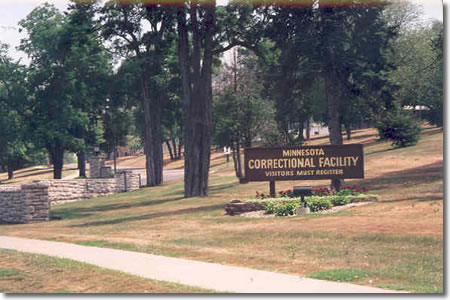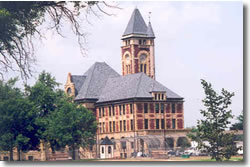Drinking Water Protection
- Drinking Water Protection Home
- About Us
- A-Z Index of Contaminants in Water
- Community Public Water Supply
- Drinking Water Grants and Loans
- Drinking Water Institute
- Drinking Water in Schools and Child Cares
- Drinking Water Revolving Fund
- Laws and Rules
- Noncommunity Public Water Supply
- Source Water Protection
- Water Operator and Certification Training
- Drinking Water Protection Contacts
Related Topics
- Annual Reports
- Drinking Water Risk Communication Toolkit
- Drinking Water Protection External Resources
- Fact Sheets
- Forms
- Invisible Heroes Videos: Minnesota's Drinking Water Providers
- Noncom Notes Newsletter
- Sample Collection Procedures (videos, pictures, written instructions)
- Waterline Newsletter
Related Sites
- 10 States Standards
- Clean Water Fund
- Health Risk Assessment – Guidance Values and Standards for Water
- Minnesota Well Index
- Water and Health
- Wells and Borings
Environmental Health Division
Red Wing Residents Learn Job Skills while Maintaining Water System
From the Fall 2007 Waterline
Quarterly Newsletter of the Minnesota Department of Health Public Water Supply Unit, Waterline
A complete list of feature stories can be found on the Waterline webpage.

The Minnesota Correctional Facility (MCF) in Red Wing has been described as a “placement of last resort for kids” by associate warden John Handy. On an average day, the prison has 130 male juvenile offenders, most of whom have already been in county institutions. Though they are juveniles, the average age of the resident is 17.9 years.
In addition to the juvenile residents, the facility has one unit of 30 adult male minimum-security prisoners (housed separately from the juvenile residents) and 160 staff members. All are served by the water system on site. But in addition to providing drinking water to residents and staff as well as the other water needs (the laundry is the largest user), the water system is providing a way for juvenile residents to learn job skills before being released.
Mike Priem, a master plumber with a quarter-century of experience in the profession, oversees the water supply at the Minnesota Correctional Facility in Red Wing, about 50 miles southeast of the Twin Cities. He says the young residents have good attitudes. “They are very eager. They want to learn.”
MCF Red Wing’s water comes from two multi-aquifer wells that go back to around the time the facility opened in 1889. One is 560 feet deep and produces 280 gallons per minute (gpm). The other is 400 feet deep and produces 70 gpm.
The facility turns over only about 20,000 gallons a day out of a 250,000-gallon ground-storage reservoir. This, along with dead ends on the system, has resulted in some aesthetic problems in the water.
In recent years, the system has also addressed exceedances in the standards for copper and radium. In the 1990s, a polyphosphate was added to the existing treatment of chlorine and fluoride for the purpose of iron suspension and corrosion control to deal with the copper exceedance.
The radium issue surfaced in the early 2000s. With the wells drawing from both the Franconia and Mount Simon aquifers, the monitoring results were indicating both high and low levels of radium. “It was difficult to predict what the water quality would be with it drawing from different aquifers,” said Minnesota Department of Health engineer Karla Peterson, who worked with the facility on finding a remedy. Peterson also noted that the size of one of the wells—it has a 20-inch diameter—factored into the unpredictability of the results.
To deal with the radium, the system added six ion-exchange units for softening, two on each well and two on the water heater. In addition to reducing the radium levels, the softeners have helped with the aesthetic qualities of the water.
Working with Priem on the water system are two other full-time operators, Elmer Sylvester and Allen Gullickson, in addition to the residents, who can enter the work program after they receive their high-school diploma or general educational development (GED) equivalent.
Approximately 50 percent of the juvenile residents graduate or get their GED while at Red Wing. Maginnis High School, which is on-site, provides classes. Residents who complete the course work can receive their diploma from their home high school or Maginnis High, which is accredited.
Upon entering the work program, the residents work with maintenance staff on various jobs. Priem, Sylvester, and Gullickson oversee the residents, who do testing of the water and other jobs under staff supervision. They often obtain their Class E operator license. “They [the operators] do a great job of working with residents as far as work skills go,” says associate warden Steve Hammer.
 |
 |
| Clockwise from above left: The administration building, constructed in 1889; the volunteer center, which used to be the warden's home; Maginnis High School; operators Elmer Sylvester (left) and Mike Priem (right) in front of the small well. | |
 |
 |
Handy points out that, along with the specific skills they acquire, the residents learn the overall traits needed to stay employed. “The absence of employment is a high-risk factor,” Handy says. “A big problem outside [for them] is maintaining employment.”
But learning basic skills, such as being reliable and punctual, helps the residents maintain employment when they get out. “They see the world differently,” Handy says. “At Red Wing, they learn to manage their emotions, solve problems.